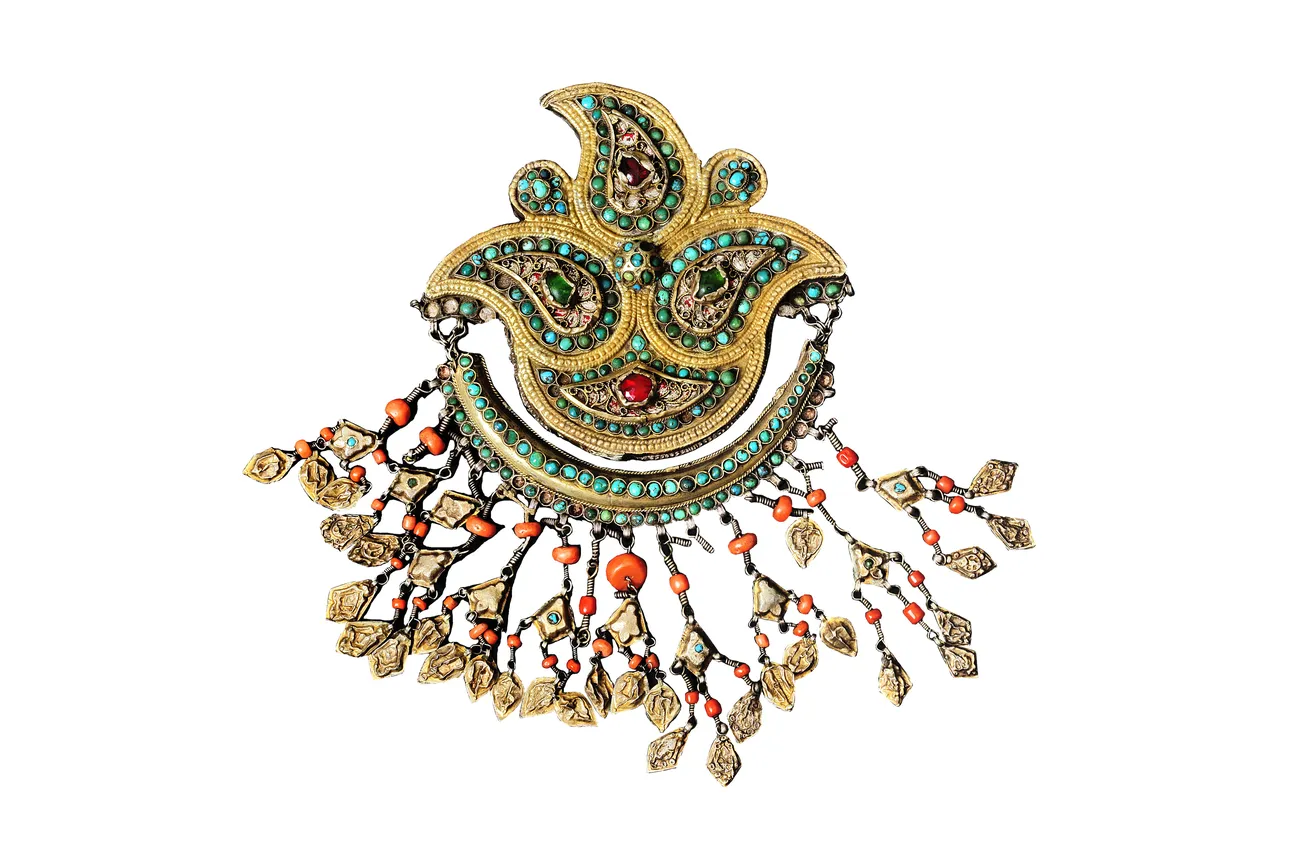The objects which were distributed among different departments were unified into the new Department “West Asia”. Important was the acquisition of objects from Jörg Drechsel in 1978 and 1980. Jörg Drechsel, an art dealer, sold many objects to different ethnologic museums at that time and even made special collection trips for various museums. A small collection of ornaments, most of them attributed to Khiwa, originates from his travels. Kalter mentions that mainly Tajiks produced silver ornaments in the second part of the 19th century. At the same time, it is known that there were also Uzbeks, Karakalpaks and representatives of other ethnic groups among the jeweler-masters. Probably coins of local production and of imperial Russia were melted for the production of ornaments.
Corals were imported from India and turquoise from Nishapur. Kalter says that ornaments were worn as ensemble and mainly on the head. Part of these ornaments were fixed on the forehead, the temples, the ears, the braid and some were used as amulet. We have no information about the women using these ornaments but we can assume that mainly wealthy women could afford it. Even today we can find artisans who have the knowledge to produce these ornaments and to create new designs. Now they use mostly silver and nickel. Their integration into the global market of silversmithing is still to come.
You can learn more about the topic in the book-album "Collections of the Federal Republic of Germany" (volume XI) in the series "Cultural Legacy of Uzbekistan in the World Collections".
The main sponsor of the project is the oilfield services company Eriell-Group.




